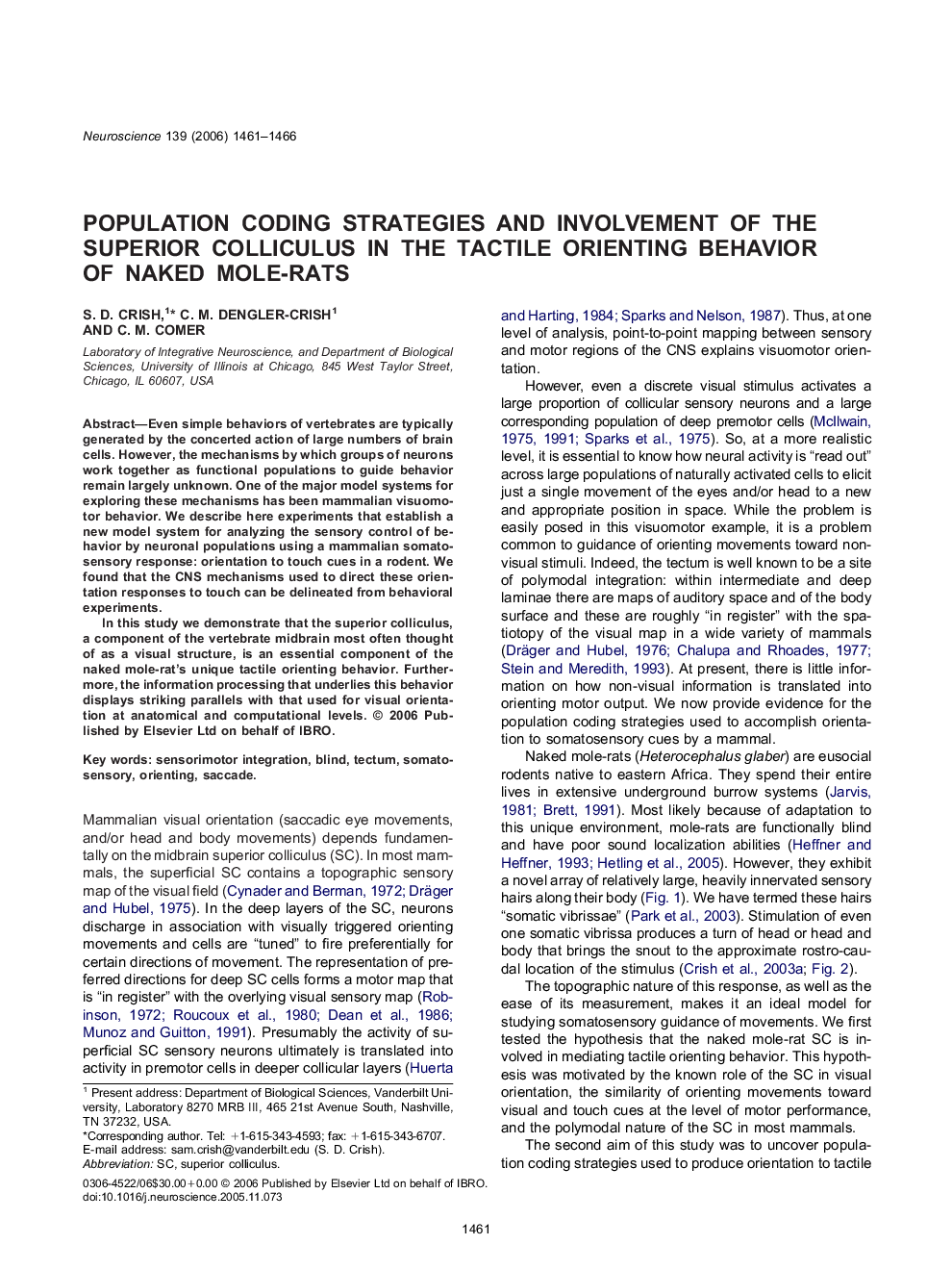| Article ID | Journal | Published Year | Pages | File Type |
|---|---|---|---|---|
| 4341751 | Neuroscience | 2006 | 6 Pages |
Even simple behaviors of vertebrates are typically generated by the concerted action of large numbers of brain cells. However, the mechanisms by which groups of neurons work together as functional populations to guide behavior remain largely unknown. One of the major model systems for exploring these mechanisms has been mammalian visuomotor behavior. We describe here experiments that establish a new model system for analyzing the sensory control of behavior by neuronal populations using a mammalian somatosensory response: orientation to touch cues in a rodent. We found that the CNS mechanisms used to direct these orientation responses to touch can be delineated from behavioral experiments.In this study we demonstrate that the superior colliculus, a component of the vertebrate midbrain most often thought of as a visual structure, is an essential component of the naked mole-rat’s unique tactile orienting behavior. Furthermore, the information processing that underlies this behavior displays striking parallels with that used for visual orientation at anatomical and computational levels.
